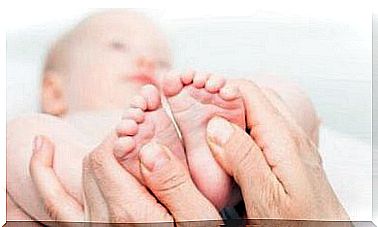Working Mothers Work Twice As Much As Fathers!

When it comes to comparing different forms of jobs and salaries, most of them follow the same pattern. You evaluate the activities and tasks of a working day. Unfortunately, this comparison is insufficient for working mothers.
In addition to her full-time job, a mother’s working day also includes all the housework.
Today, mothers often work both at home and away. They have various tasks to do throughout the day. In fact, there are more and more mothers who work full-time.
Because of this, a mother’s working day never seems to end. It starts early in the morning and ends late at night.
It is not easy to make clear comparisons when it comes to the work of mothers and fathers. However, a Spanish study in the course of a draft labor law found that one working day of a working mother often corresponds to two working days of the father.
What does this mean and how does it relate to it?
The rights of a working mother:
Spanish legislation has made some progress in terms of support for working mothers .
1. Maternity leave
The maternity protection phase in Spain lasts up to 16 weeks after the birth of the child. Even longer in the following cases:
- On the one hand, there are two additional weeks for multiple births
- For triplets, on the other hand, there are four additional weeks
- In the case of the birth of a disabled or sick child, there are another 2 additional weeks
Working mothers must inform about their absence during pregnancy and justify them. In these cases they are free to leave work:
- Examinations during pregnancy
- Pregnancy preparation
- Malaise or illness
2. Reduction of working hours
Mothers can customize their working days. This is possible until the child is 12 years old. However, a reduction in working hours also results in lower wages.

3. Unpaid absence
In cases where the mother has to look after the baby herself , she can take a break of up to 3 years. Your job will remain, however, and the social security contributions will remain.
After the first year, working mothers are then entitled to the same or an equivalent job. You then have the right to get back on board.
4 . termination
It is also important to consider the possibility of unemployment. Unfortunately, there is always the chance that a woman will be fired.
In such cases, the mother then receives unemployment benefit, which is extended over a period of 4 months.
“A mother’s working life never seems to end. It starts early in the morning and ends late at night. “
5. Breastfeeding and work
Mothers can breastfeed for one hour a day. As a result, they do not lose any working hours and their salary remains the same. This applies to the first 9 months after the birth.
You can also reduce your working day by an hour.
Working Mothers: How Much is a Working Day Worth?
A 2015 US investigation found that a mother should be paid an annual salary of $65,300. That’s about two and a half times what the average worker in the United States receives.
A mother would make an average of $1,735 a week. It should be noted that the cost of child care, gardening and interior design are also included in this assessment.

Support for working mothers
For a while now, working mothers in Spain have been receiving financial support of up to 100 euros per month. This sum is paid out either monthly or in a one-off payment of € 1,200.
This benefit can be extended until the child is 3 years old. This grant is financed from social contributions.
It can even be applied for in cases of adoption or a foster child.
We now know that a working mother’s day is full of duties. That is why she has to constantly split herself between her job and her family and find a balance. It’s really not easy.
Fortunately, there has been significant progress in recent years. The achievement of mothers and working mothers is increasingly recognized. This is also evident in the case law, among other things. And yet there is still a lot to do!









